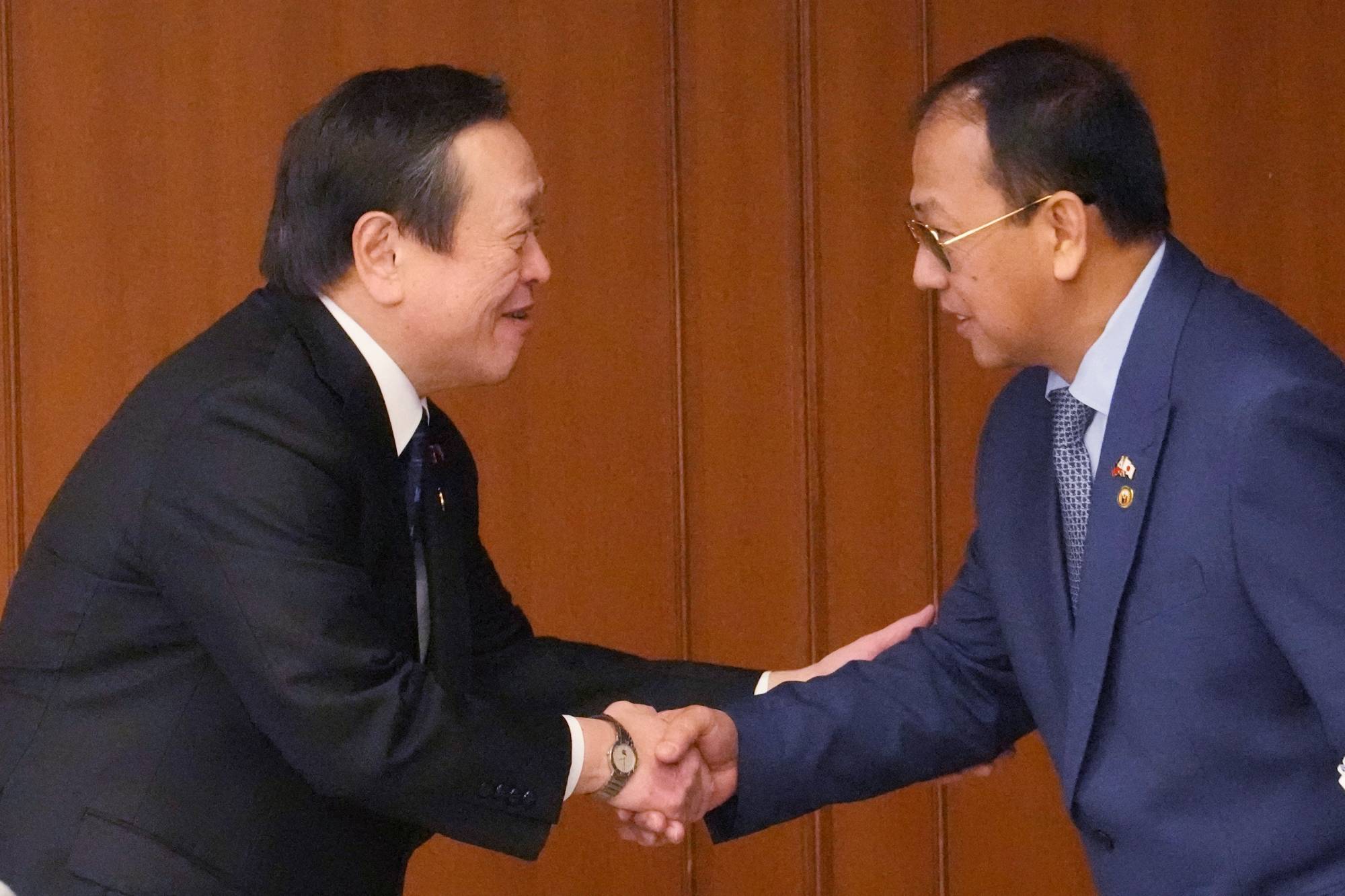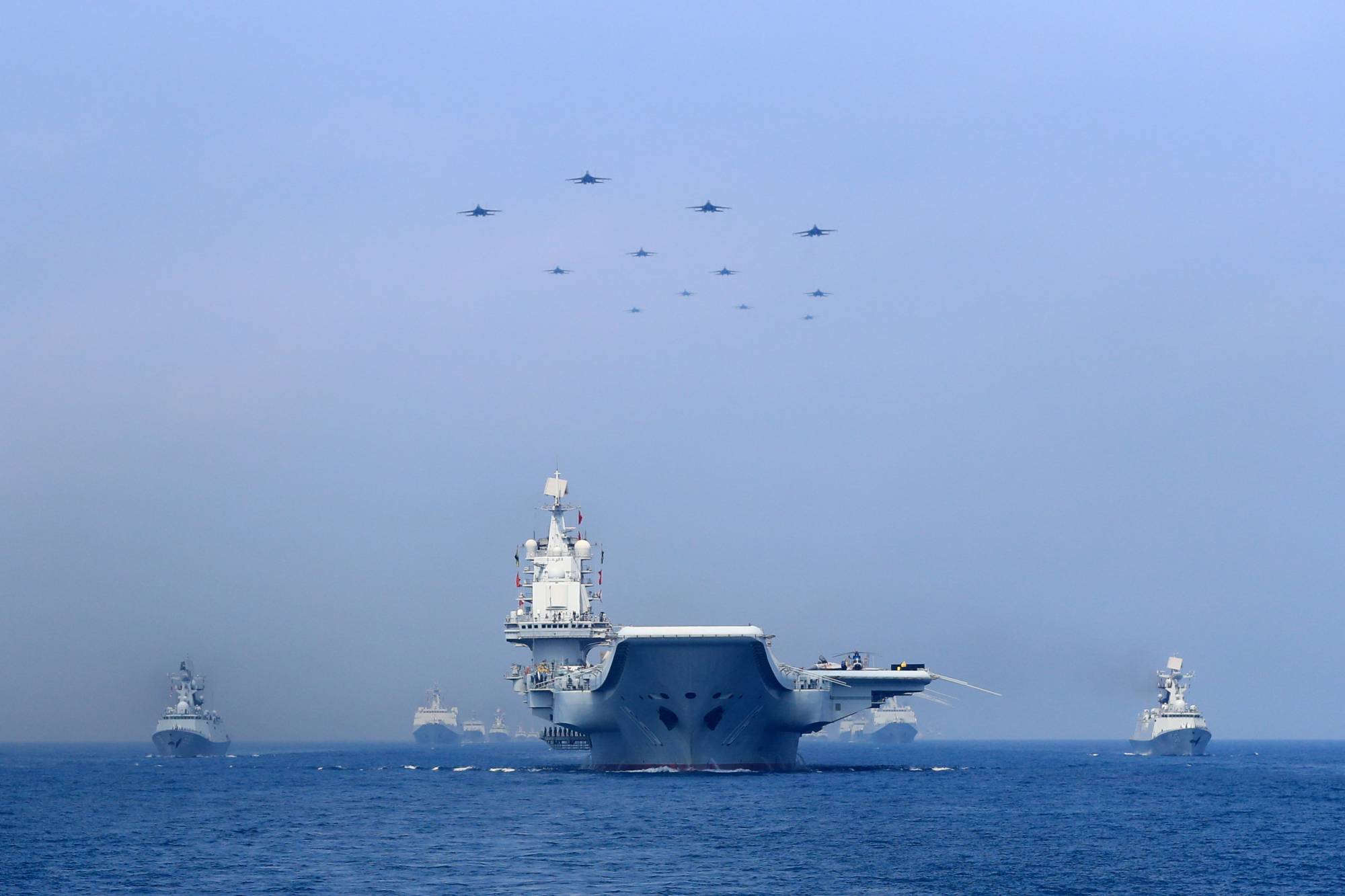GABRIEL DOMINGUEZ
Japan on Wednesday unveiled guidelines for a new program to strengthen the militaries of like-minded countries by providing “official security assistance” — a move that breaks with its previous policy of avoiding the use of development aid for military purposes other than disaster relief.
First announced in last December’s revised National Security Strategy (NSS), the new OSA framework will initially provide equipment, supplies and infrastructure development assistance to partner countries in the form of grants, rather than loans, in a bid to reinforce what Tokyo describes as the region’s “comprehensive defense architecture.”
Foreign Ministry officials say the Philippines will be one of the first beneficiaries of OSA, with Malaysia, Bangladesh and Fiji also among those being considered.
The purpose of the initiative is to “contribute to the creation of a desirable security environment for Japan,” while maintaining Japan’s “basic principles as a peaceful nation,” the ministry said in a statement.
A final Cabinet decision on the policy is expected in May, officials said.
OSA: Beyond traditional aid
OSA, which will be implemented jointly by the National Security Secretariat and the Foreign and Defense Ministries, is being presented as an expansion of Japan’s official development assistance (ODA) — one of the world’s largest foreign aid programs — to cover projects “for the benefit of armed forces and other related organizations.”
The new framework was revealed as Tokyo moves away from a strict nonmilitary approach to ties with its neighbors and looks to realize its vision of a Free and Open Indo-Pacific (FOIP).
The government said the OSA program will focus on improving the capabilities of regional militaries to conduct surveillance of territorial waters and airspace, U.N. peacekeeping operations and humanitarian assistance as well as disaster response activities.
 Philippine defense chief Carlito Galvez Jr. and Japanese Defense Minister Yasukazu Hamada (left) at the beginning of a bilateral meeting at the Defense Ministry in Tokyo in February | POOL / VIA REUTERS
Philippine defense chief Carlito Galvez Jr. and Japanese Defense Minister Yasukazu Hamada (left) at the beginning of a bilateral meeting at the Defense Ministry in Tokyo in February | POOL / VIA REUTERSThe gear and materials are to be provided within the scope of Japan’s so-called three principles on defense transfers laid out in 2014 that effectively ban the export of potentially lethal equipment.
The initiative will be an additional tool for Japan to strengthen relations with these nations beyond the scope of traditional ODA. While that has included the provision of maritime law enforcement equipment, the new OSA framework will aim to enhance partners’ defense capabilities to counter regional security challenges, including those posed by China, Russia and North Korea.
Russia’s war on Ukraine — and fears that China could take a page from that conflict and invade Taiwan — have provided an impetus for the drastic shift in Japan’s defense and security policies.
According to its fiscal 2023 budget, the government has set aside ¥2 billion ($15 million) for OSA. Funding will be separate from the ¥570.9 billion in economic and social development assistance that Tokyo provides to developing countries.
While this year’s modest OSA budget appears largely symbolic, especially compared with the ODA funds, experts say the decision to launch the program is significant, as it marks another step in Japan’s march toward a more robust and proactive defense posture that could ultimately allow it more leeway in defense transfers.
Tokyo has traditionally exercised self-restraint on arms exports and defense technology transfers.
But over the last 15 years, the country’s security posture has been gradually changing, as shown in the three principles, an ODA expansion to cover maritime law enforcement equipment and — more importantly — the revisions to Japan’s national security documents, said Simon Chelton, director at the International Security Industry Council of Japan.
“These steps point to Tokyo’s growing recognition that defense exports can have a positive role in regional security relations,” he said.
Bolstering national power
The strategic use of development assistance also highlights Tokyo’s deployment of the “full spectrum of state capabilities” to improve regional security, said Robert Ward, the Japan Chair at the International Institute for Strategic Studies, noting that this is what the NSS calls “comprehensive national power — the combination of diplomatic, defense, economic, technological and intelligence capabilities.”
Little information has been released about the type of military equipment to be provided or the facilities to be built under the program, with the Foreign Ministry suggesting this will be determined on a case-by-case basis.
But ministry officials said Wednesday it will mainly include small patrol ships, drones and radar and communication systems, including for satellites.
Tokyo stressed that recipient countries will be required “to ensure the appropriate management of materials, equipment and infrastructure” provided.
 Chinese People’s Liberation Army Navy warships and fighter jets take part in a military display in the South China Sea in April 2018. | REUTERS
Chinese People’s Liberation Army Navy warships and fighter jets take part in a military display in the South China Sea in April 2018. | REUTERSThis could mean that selected countries would have to pay for the lifetime support of the gear and infrastructure, a move that could help Japan’s struggling defense industry broaden its customer base.
“Any equipment transferred in this way would require long-term support solutions and this would be expected to involve Japanese manufacturers of the equipment as well as their suppliers,” Chelton said.
Potential partners
Tokyo said the selection of countries will be based on a number of factors, including an assessment of the security needs of Japan and the region and the “appropriateness and transparency” of any transfer.
The Philippines, which is rapidly forging closer defense ties with Tokyo and considering a trilateral security pact with Japan and the United States, has already received warning-and-control radar systems as well as multirole vessels and maritime surveillance aircraft from Japan under the ODA expansion for maritime law enforcement equipment.
Located relatively close to Taiwan and sitting astride key maritime trade routes, the Philippines is considered crucial to regional security amid concerns that a crisis akin to the invasion of Ukraine could envelop the area.
The consideration of Fiji as a recipient reflects Tokyo’s concerns about growing Chinese influence in and around the Pacific islands, while broadening relations with Dhaka — already an important ODA recipient — “makes strategic sense for Japan,” according to Ward. Aid to Malaysia may focus on tackling threats to shipping in the Strait of Malacca.
“Many of these countries have close ties to China, but they are also critical for maritime security, which is why they are at the core of Japan’s FOIP vision,” said Sebastian Maslow, a Japan security expert and lecturer at Sendai Shirayuri Women’s College.
Plans to expand the program?
While the OSA might not be a revolutionary shift given that Japan has provided maritime law equipment to its neighbors under the ODA framework, the program is likely meant to open the door for the type of defense cooperation that other major countries routinely carry out.
Tokyo’s first steps will probably be incremental, meant to provide the foundation for expansion.
In February, Defense Minister Yasukazu Hamada said Tokyo is weighing a substantial revision to its three principles, calling the transfer of equipment an “important policy tool” for Japan.
At the same time, Hamada implied defense transfers might go beyond the region, saying that it would also allow Japan to “provide assistance to countries like Ukraine, which are being subjected to aggression in violation of international law.”

No comments:
Post a Comment